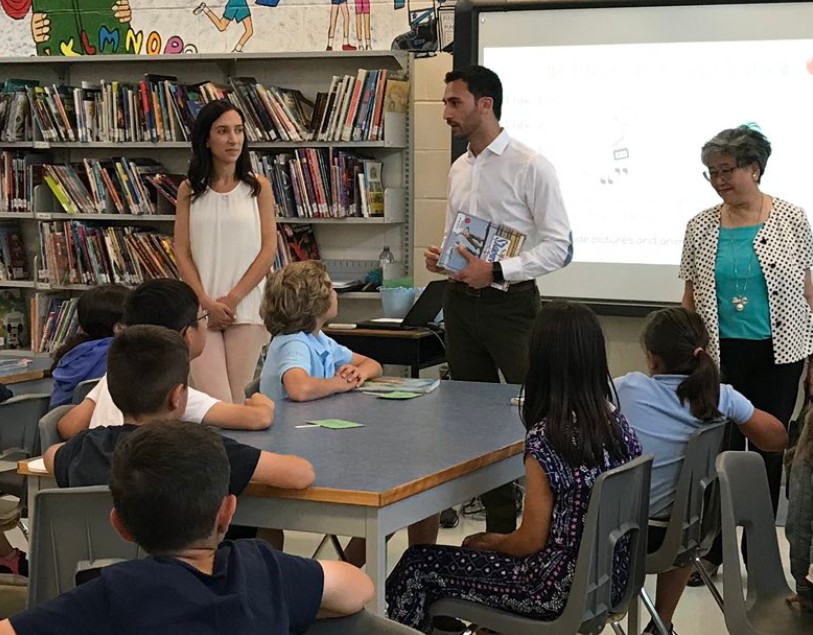
New education minister raises hopes for a change in direction
With thousands of anxious parents across Peel dreading a possible teachers' strike in September, a union leader is seeing a shift in the way the Ministry of Education is relating to teachers since a provincial government shuffle put MPP Stephen Lecce into the high-profile portfolio. Lecce held out the promise of a win-win deal as he called parties to the bargaining table on Thursday for an expedited negotiation process before contracts for all teachers in Ontario end Aug. 31.
Gail Bannister-Clarke, president of the Peel Elementary Teachers’ Local and an executive member of the Elementary Teachers’ Federation of Ontario, is eager to bring the union’s demands before the government and is hopeful that the new tone set by Lecce could lead to a more positive outcome. But she still isn’t sure the governing PCs are ready to walk the talk.
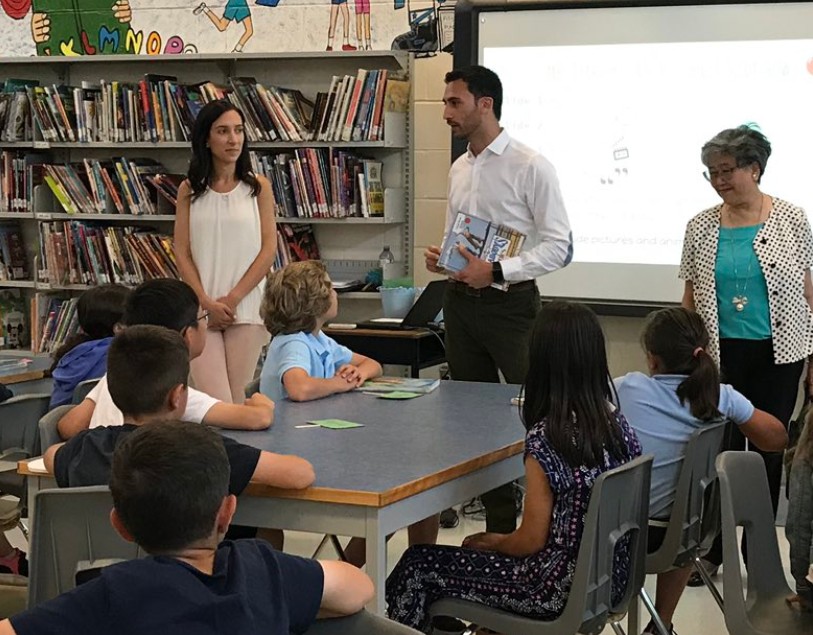
New Minister of Education Stephen Lecce visits a classroom
Lecce announced he was willing to sit with every party and discuss their grievances in order to finalize a new collective agreement before school resumes in September, a move that has rekindled hopes among teachers of a reversal of recent cuts to education, including a decision to increase average class sizes in upper elementary and high school grades.
“I’m glad for the opportunity for us to come together and have dialogue,” Bannister-Clarke told The Pointer. “There was concern earlier that the premier was addressing issues that should have been at the bargaining table and [not] be addressed unilaterally. We’re definitely interested in discussing our goals and what would be at the central table as well as the local table.”
Bannister-Clarke said Lecce responded to letters sent by the union welcoming him to his new position, saying he is interested in scheduling a meeting to discuss key points, something former minister Lisa Thompson never did, she said.
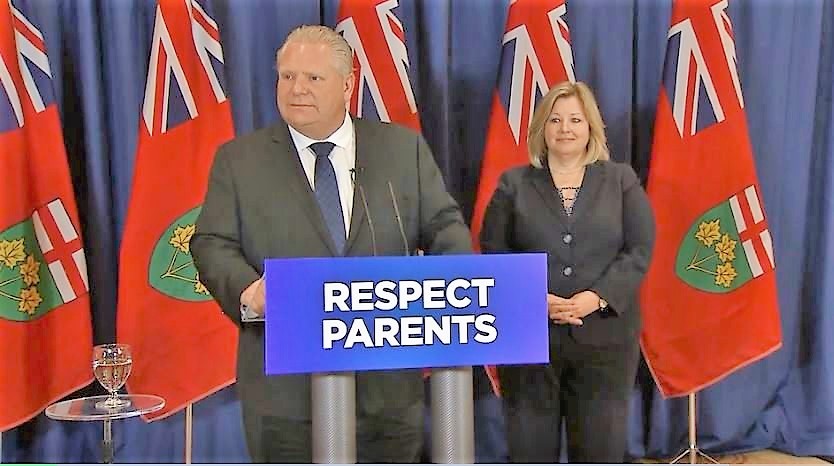
Premier Doug Ford with former education minister Lisa Thompson
“As an organization, we reached out to the previous government. We welcomed the new Minister of Education at the time (Lisa Thompson) and there was no response, no dialogue at all.” she said. “She didn’t even have time to meet with us. And this went on for months and months.”
The Dufferin Peel Catholic District School Board said it welcomed Lecce’s announcement. “The DPCDSB would welcome an early resolution to contract negotiations; a resolution that respects all parties and causes no disruption to students/student learning and families,” a statement released by the school board said.
The government’s cabinet shuffle, which demoted a number of top-ranking politicians such as former finance minister Vic Fedeli, Thompson, former minister of children, community and social services Lisa MacLeod and others, appears to have been part of a broader move to redeem the PCs’ falling poll numbers ahead of an upcoming federal election in the fall. There are fears among Conservatives that a strike by teachers or other strife around the education system this fall could affect their chances in the October election.
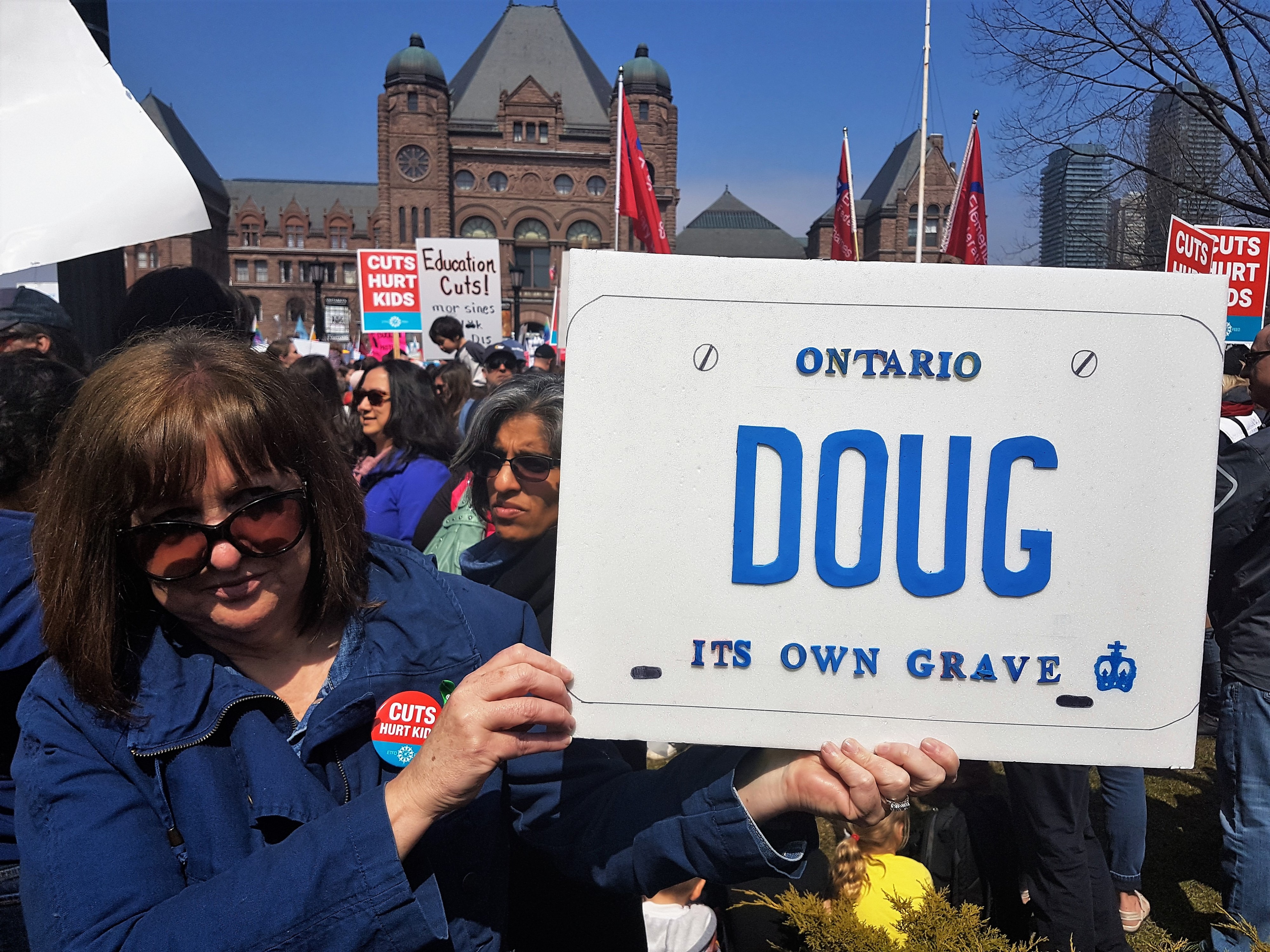
Teachers protested the Ford government education cuts at Queen's Park in the spring
Bannister-Clarke said that, although she welcomed the shuffle, skepticism prevails among teachers. Lecce hasn’t promised to reverse any of the government’s unpopular decisions.
“The tone set by this government is that they want to cut and they are not necessarily listening to all stakeholders and getting information, and I don’t think this tone will change any time soon,” she said. But she continues to hope that the province will rethink some of its decisions.
Average class size in Grades 4 to 8 is slated to rise to 24.5 from 23.5 and to 28 from 22 in high schools. She said there are wide implications of this move. “If we have more students, teachers will get less time to spend with the students and meet their individual needs,” she said. “Class violence may also increase due to frustration of not having their needs addressed.”
She said the class sizes will make it more difficult to give extra attention to students who speak English as a second language or have special needs, crippling the learning process. The class size increases, plus a new requirement that high school students take some courses online, will also mean phasing out about 3,500 teaching positions over the next four years, according to the government’s own estimates.
Earlier this year, 193 high school teachers and 137 elementary teachers in the Peel District School Board were notified that they were “surplus to board” — essentially a layoff notice. The elementary teachers have since been recalled, along with 119 of the high school teachers, but the remaining 74 will be offered only supply and long-term occasional positions, despite the government’s promise that no teachers would lose their jobs and its creation of a $1.6-billion “attrition fund” to help boards avoid layoffs. As a result of the class size increases, more reductions in staff likely will come in future years.
High school students have found their course options restricted as smaller-enrollment classes, many offering specialized learning in areas such as art and vocational work, were eliminated to help schools conform to the increased average class size.
Meanwhile, the cuts will affect some crucial supports beyond teaching staff. The 2019 report by the advocacy and research group People for Education found that each secondary school guidance counsellor is responsible for 375 students alone, while in some schools the number is as high as 687 students. Access to psychologists in schools is similarly uneven, with 58 percent of schools in Northern Ontario lacking such access, compared to 4 percent in the GTA.
These issues could be further exacerbated if the government slashes the budget even more, the report said.
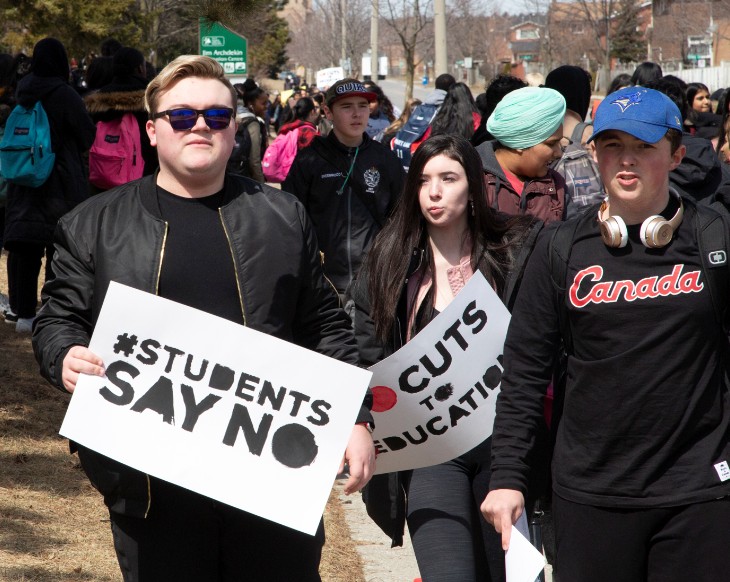
Brampton high school students took part in a province-wide walkout to protest education cuts
“As we develop education policy to ensure that our public education system evolves to meet the long-term needs of both students and society, it is vital to view our schools as existing in an educational ecosystem,” the report says. “This ecosystem has many dimensions, including school culture, extracurricular learning opportunities, and the community beyond the school. A properly resourced educational ecosystem is necessary to support students in developing the skills and competencies they need to thrive.”
Bannister-Clarke said that it’s too early to fret about the negotiations on a local level. Bargaining with teachers happens on two levels, with major issues bargained at the provincial level and secondary ones on a board-by-board level.
“The Ministry will meet with organizations like ETFO and decide which goes on which table,” she said. She said if the union isn’t satisfied with the government’s ruling, the next option would be to appeal and send the concerned item for arbitration. “But we’re not there yet.”
Carla Pereira, director of communications for the Peel District School Board, said the board would not comment on the situation until it sees what transpires in the discussions.
“I think we should respect what is decided on the bargaining table before we could comment.”
Submit a correction about this story


